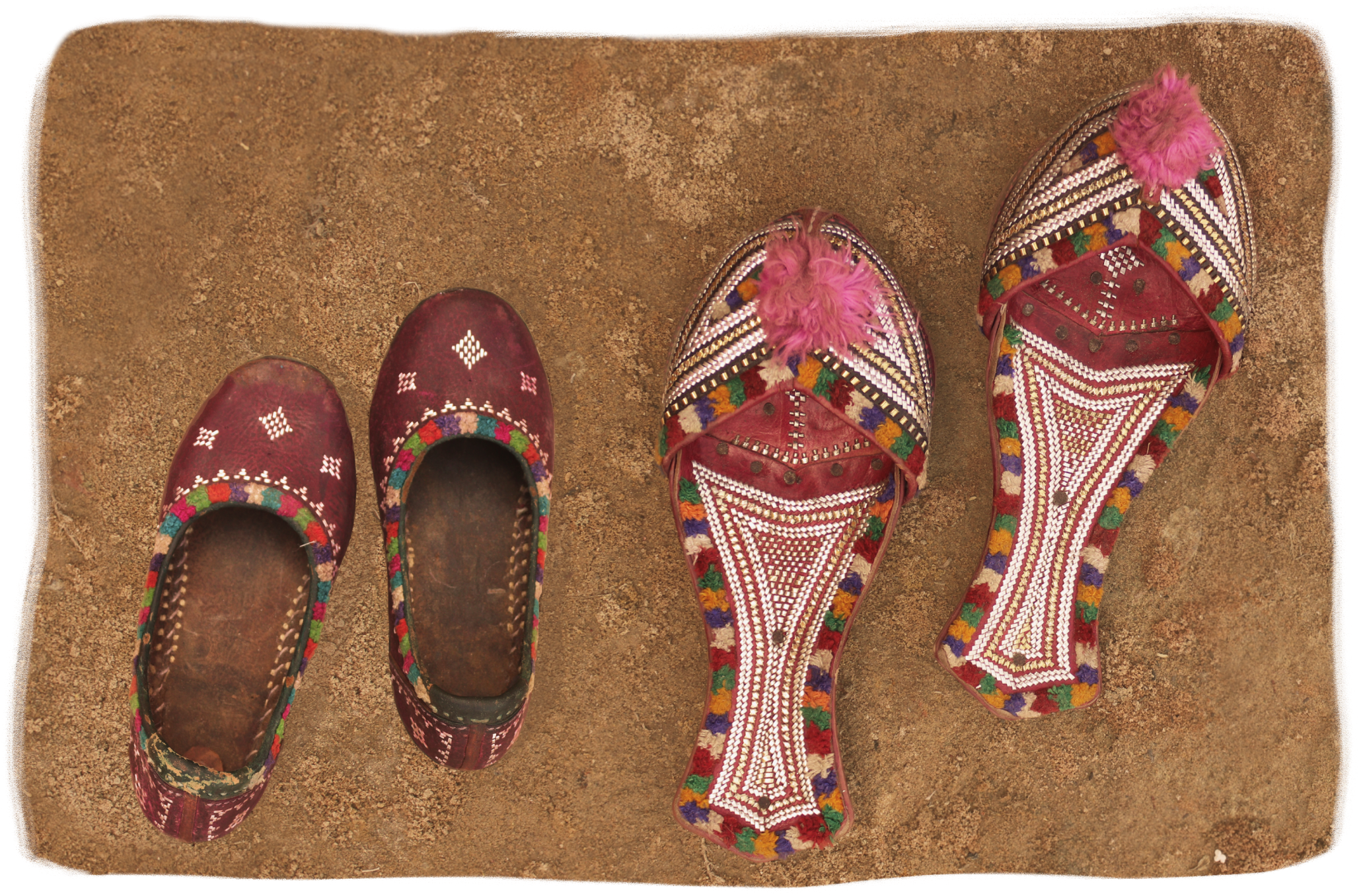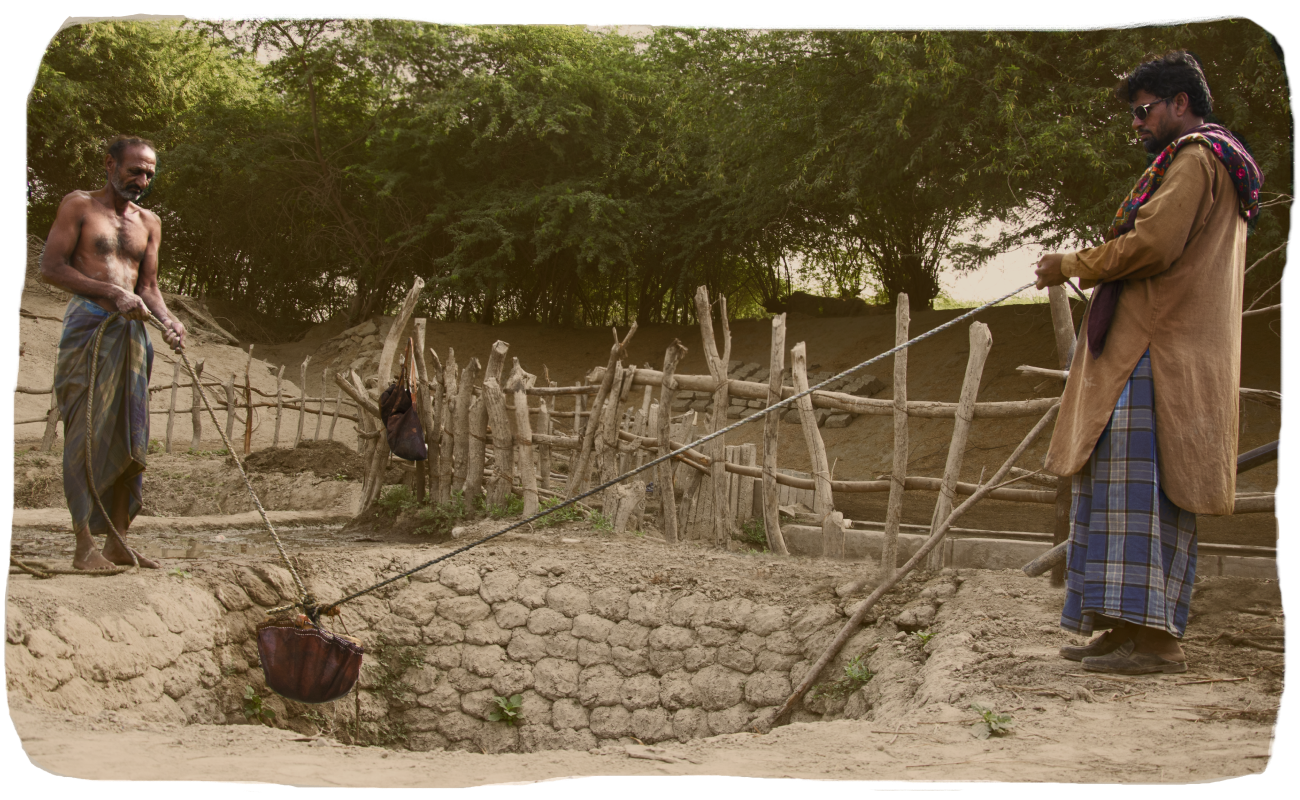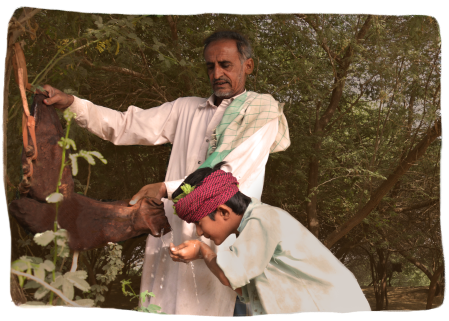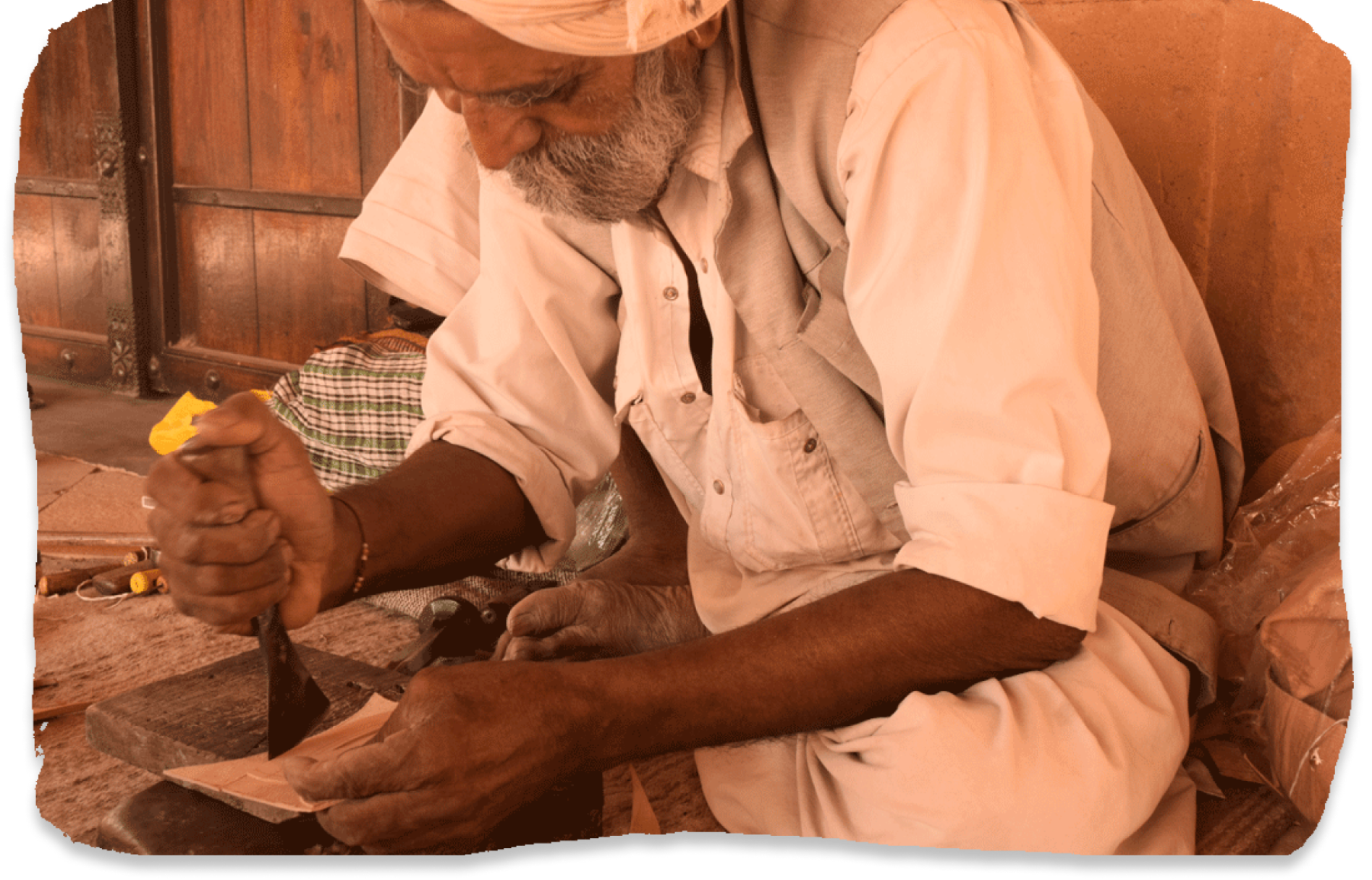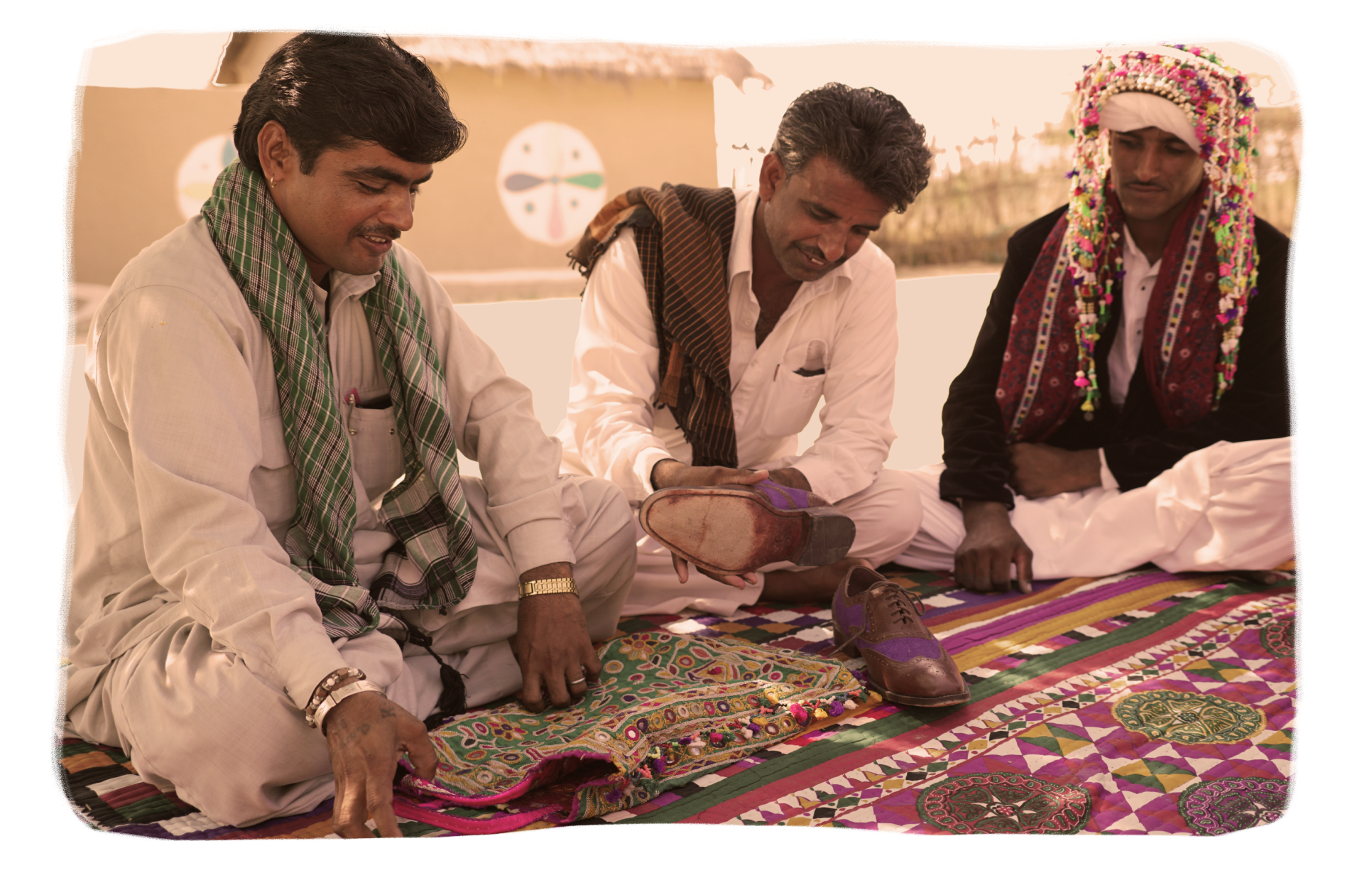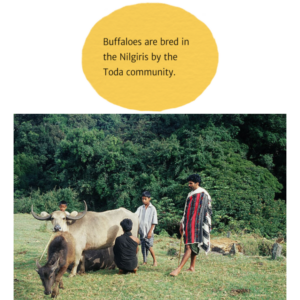“It is the Meghwal Marwada’s artistry that crafts our Maldhari’s journeys - these shoes, our water carriers, those animal strappings, the ropes, sacks and seaters!”
- Sale Mohmmad, Hodko village
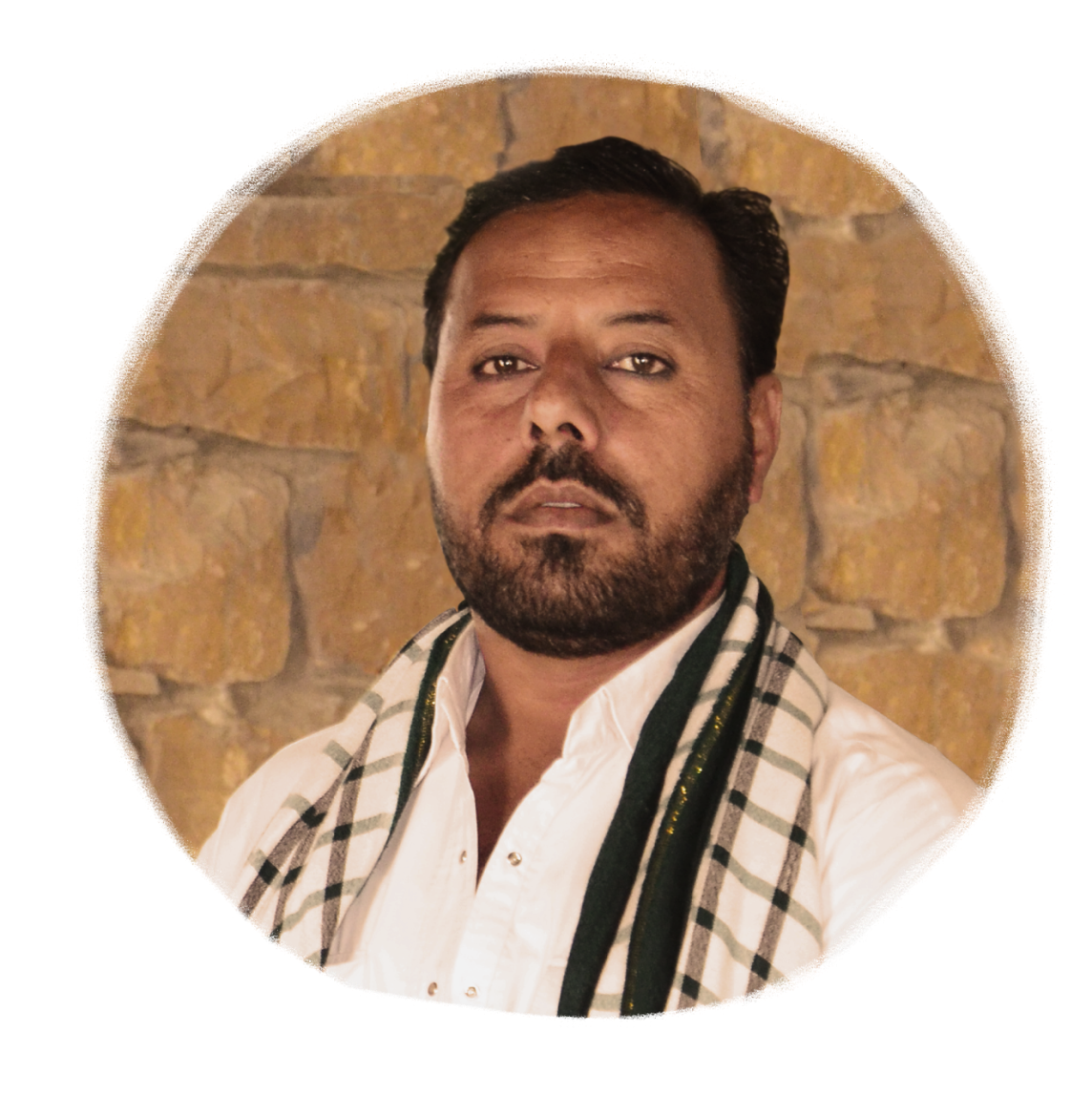
The leather from their dead animals accompanies the Maldharis at every stage of their life. Especially in the
Banni. Every newborn sleeps on a takli, as a young herder wears the Kaunsla. As they grow older they
wear Mojaris and Zhalani jootis; drawing water with a Chadai and carrying it in a Sandhaaro, while
accompanying their cows and buffaloes in migration.
Banni maldharis fill water using a Chaddai into a Sandharo (leather water carrier) and carries while out grazing.
A young Maldhari boy drinks water from a Sandharo:- leather pores allow for evaporation and so, Sandharo keeps the water cold in the hot desert.
Each piece is custom made for the Maldhari by the famed Meghwal leather artisans of Kachchh.
Till a few decades ago, the Meghwal Marwada would be close at hand when the Maldhari’s animal died. The dead animal would be skinned, this hide tanned using local vegetation, and then crafted into items perfectly suited to the itinerant journeys of a Maldhari.This unique relationship of exchange and mutuality that has lived on for generations between the cattle herding Maldharis of Banni and the Meghwal leather artisans is known as Hataar.
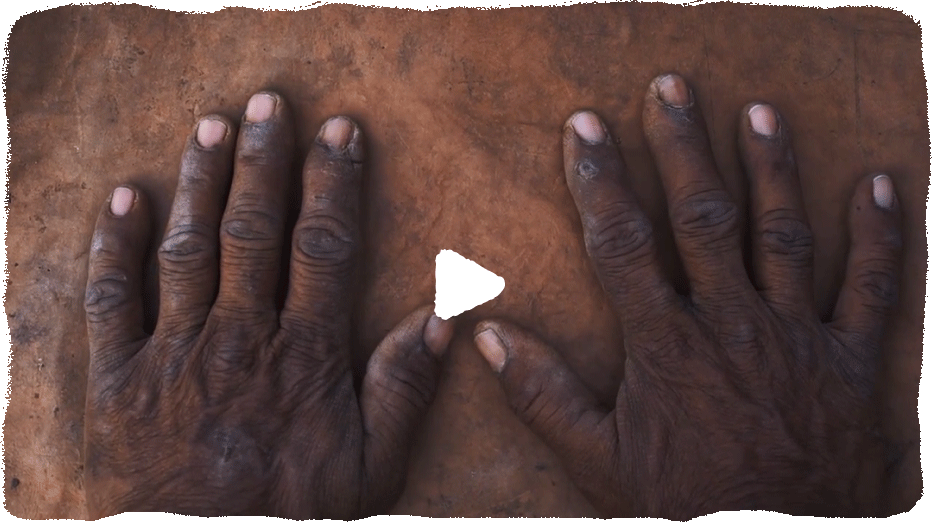
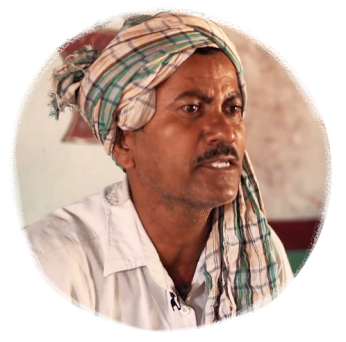
Sumarbhai, a master craftsman and a meghwal
marwada from Hodka village says,
“Every Meghwal family is a Hataar (hereditary
artisan) to about fifteen Maldhari households.
These ties are timeless and every Meghwal and
Maldhari child inherits these bonds.”
No auspicious event amongst the Banni Maldharis is ever complete without the Meghwal Marwada. The preparations for a wedding can begin only after the associated meghwal arrives with the Varolo, a pair of beautifully crafted leather shoes for the groom and the bride.
An artisan cuts leather with a handheld knife
Richly crafted leather shoes as a part of a
wedding trousseau
Sumarbhai, a master craftsman and a Meghwal
Marwada from Hodka village says,
Sights from a wedding: Varolo brought by a Meghwal leather artisan as a part of marriage rituals.



